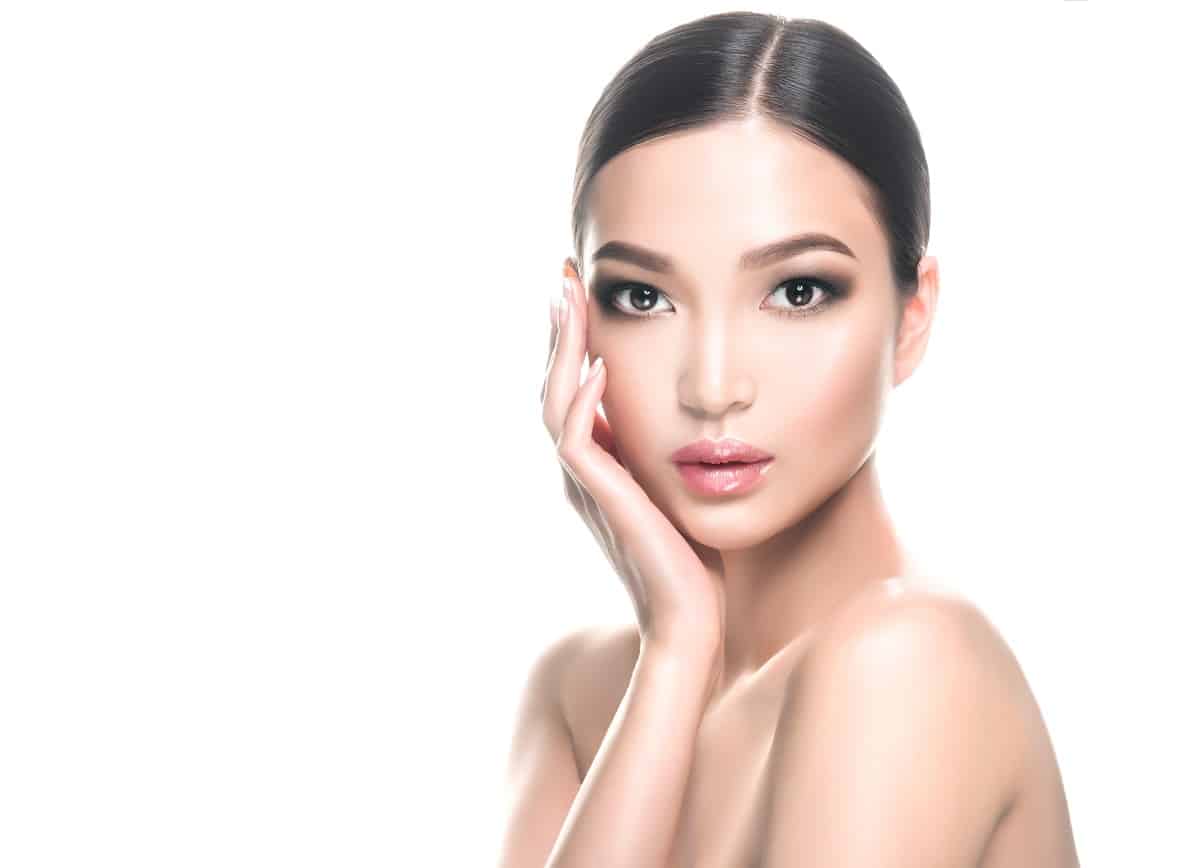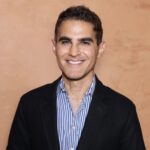Blepharoplasty, or eyelid surgery, is one of the most common procedures requested by Dr. Ali Ghafouri’s Asian patients. It is estimated that about 50 percent of people of Asian descent do not have a crease or fold on the upper eyelids, which may cause the eyes to appear narrower or smaller when the eyes are opened. The lack of an upper eyelid crease may also make the eyes appear hooded. The goal of Asian blepharoplasty (Asian double eyelid surgery) is to create a fold on the upper eyelid to make the eyes appear larger and more alert — without compromising patients’ ethnicity.
Here, Dr. Ghafouri breaks down everything you need to know about Asian blepharoplasty.
Reasons for Asian Blepharoplasty
Asian patients pursue blepharoplasty mainly for the following reasons:
- To improve the size of eyes that appear small, narrow or hidden underneath the eyelids
- To improve a “hooded” eye appearance due to a lack of an upper eyelid crease
- To accentuate one’s natural eyelid crease
- To rejuvenate the upper and/or lower eyelids and reverse the signs of aging in the eye region
- To make it easier to apply eye makeup
Asian Blepharoplasty vs. Traditional Blepharoplasty
The goal of Asian blepharoplasty is often twofold: to create a crease on the upper eyelid so the eyes appear larger, and, if necessary, modify the eyelid skin and tissues to minimize signs of aging on the upper and lower eyelids. Traditional blepharoplasty differs from Asian blepharoplasty in that it does not necessarily create a prominent crease on the upper eyelid skin. Instead, it focuses solely on modifying the skin, fat and tissues on the upper eyelids to create a younger appearance. Similarly to traditional blepharoplasty, Asian blepharoplasty may also be performed to improve the line of sight that was impaired due to excess hanging skin on the upper eyelids.
Performing Asian Blepharoplasty: Small Stitch Incision vs. No Incision
There are two main approaches to Asian blepharoplasty. The first technique, called the small stitch incision technique, involves creating a small incision on the upper eyelid. Through this incision, the surgeon removes extra fat and skin and modifies the underlying eyelid structure to create a defined crease on the lid. This technique is appropriate if the patient has extra fat and skin on the lids.
The second technique is non-incisional. Instead, it uses a series of small openings on the upper eyelid skin to insert sutures that lift and rearrange the eyelid skin, creating the desired lid crease. In this technique, the underlying eyelid structures are not cut in order to create a new eyelid crease.
The anatomy of the lower eyelids is similar in Asians and non-Asians and the same aesthetic plastic surgical techniques are used. To correct the lower eyelid bags and dark circles, an incision is made through inner lining of lower eyelids (trans-conjunctival approach). Through this incision, fatty tissue is repositioned or removed to smooth out the appearance of under-eye bags. If the patient has significant lower eyelid laxity and redundancy of the skin, the incision is made close to the lash line through the natural eyelid and laughs lines. The excessive loose skin is removed the ligaments are tightened (cathopexy).
Recovering from Asian Blepharoplasty
The recovery for Asian blepharoplasty is similar to that of other blepharoplasty procedures. Patients will need to take one to two weeks off from work. During this initial recovery period, patients must rest with their head elevated as much as possible.
Minor side effects include swelling and bruising, which can be managed with ice compresses. The pain after the surgery is very minimal. Any post-op discomfort can be alleviated with over –the-counter or prescription pain medication. Most patients are well enough to resume everyday activities by two weeks. Please refer to our pre- and post-operative forms for specific instructions.
What kind of anesthesia is used for Asian double eyelid surgery?
The eyelids are numbed up by injecting a local anesthetic solution. The discomfort is minimal and the injection site may burn for a few seconds, similarly when having anesthetic injections for dental work. The actual upper eyelid surgery takes about 30 minutes to complete and it is well tolerated. The procedure is usually performed in a surgical suite at our Scottsdale office. Some patients may elect to have intravenous sedation during the entire procedure.
What is the cost of Asian Blepharoplasty (eyelid lift)?
The average cost of Asian upper eyelid surgery (blepharoplasty) is $3,000 to $4,500. The exact cost depends on the extent of the surgical techniques used and whether the surgery is performed at the office or at the outpatient surgery center.
Surgeon Choice Matters
Asian blepharoplasty requires in-depth knowledge of specific anatomy, and precise and meticulous surgical skills in order to achieve natural-looking results. It is very important to choose a board-certified surgeon who has extensive experience with the intricacies of Asian blepharoplasty. As an oculoplastic surgeon, Dr. Ghafouri has almost 20 years of experience performing cosmetic procedures that focus solely on the eyes and face. He has performed hundreds of Asian blepharoplasty procedures and has consistently delivered results that are both beautiful and natural-looking. In addition to his surgical expertise, Dr. Ghafouri is known for his commitment to delivering the highest quality in patient care.
Here are more of Dr. Ghafouri’s qualifications:
- Received medical degree from Michigan State University (with high honors)
- Completed residency in ophthalmology at New York University School of Medicine — North Shore University Hospital
- Completed sub-specialty fellowship in oculoplastic and orbital surgery with Baylor College of Medicine — Cullen Eye Institute in Houston
- Serves as Chief of Ophthalmology at the Honor Health Scottsdale Hospital System
- Serves as consultant staff surgeon for Mayo Clinic
- Has performed over 12,000 major reconstructive and cosmetic procedures on the eyes and face
- Has operated on over 300 doctors
- Past president of Phoenix Ophthalmological Society
- Fellow of American Academy of Facial Plastic Surgery
- Named “Top Doctor” by Phoenix Magazine five years in a row
Contact Us Today
To learn more about Asian blepharoplasty, or the other facial cosmetic procedures Dr. Ghafouri offers at his Scottsdale practice, schedule a personal consultation. Contact us by calling (480) 905-1010, filling out our online form or emailing our office today.
Dr. Ghafouri, MD, FACS, is a distinguished ophthalmic plastic and facial cosmetic surgeon based in Scottsdale and Phoenix, Arizona, with extensive experience in eyelid, eye orbit, tear drainage, and skin cancer surgeries. He specializes in minimally invasive aesthetic procedures such as cosmetic eyelid lifts, endoscopic forehead lifts, mid-facelifts, laser facial rejuvenation, Botox, and dermal fillers. Board-certified by the American Board of Ophthalmology and a fellow of several prestigious medical societies, he has performed over 18,000 major reconstructive and aesthetic surgeries. Dr. Ghafouri and his team at Arizona Oculoplastic Specialists are dedicated to delivering exceptional patient care with compassion and excellence.
9431 E. IRONWOOD SQUARE DR., SCOTTSDALE, AZ 85258
Dr. Ghafouri offers virtual consultations for out-of-town patients. We see patients from all across the country who trust Dr. Ghafouri’s unique skills and expertise for their facial or eyelid surgeries. If you choose to travel to Arizona for your surgery, we can also recommend hotels and other resources to make your stay comfortable.
To schedule a virtual consultation with Dr. Ghafouri Click here.
Contact Us
What procedure are you interested in?
What procedure are you interested in?




